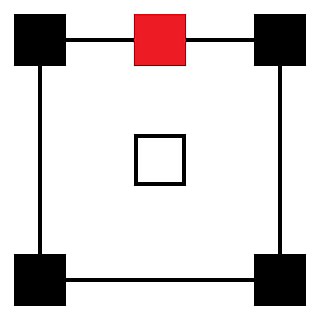Related Research Articles
Dolby Digital, originally synonymous with Dolby AC-3, is the name for a family of audio compression technologies developed by Dolby Laboratories. Called Dolby Stereo Digital until 1995, it is lossy compression. The first use of Dolby Digital was to provide digital sound in cinemas from 35 mm film prints. It has since also been used for TV broadcast, radio broadcast via satellite, digital video streaming, DVDs, Blu-ray discs and game consoles.

THX is a suite of high fidelity audiovisual reproduction standards for movie theaters, screening rooms, home theaters, computer speakers, video game consoles, car audio systems, and video games. The THX trailer that precedes movies is based on the Deep Note, with a distinctive glissando up from a rumbling low pitch.

Home cinema, also called home theaters or theater rooms, are home entertainment audio-visual systems that seek to reproduce a movie theater experience and mood using consumer electronics-grade video and audio equipment that is set up in a room or backyard of a private home. Some studies show that films are rated better and generate more intense emotions when watched in a movie theater, but convenience is a major appeal for home cinemas. In the 1980s, home cinemas typically consisted of a movie pre-recorded on a LaserDisc or VHS tape; a LaserDisc Player or VCR; and a heavy, bulky large-screen cathode ray tube TV set, although sometimes CRT projectors were used instead. In the 2000s, technological innovations in sound systems, video player equipment and TV screens and video projectors have changed the equipment used in home cinema set-ups and enabled home users to experience a higher-resolution screen image, improved sound quality and components that offer users more options. The development of Internet-based subscription services means that 2020s-era home theatre users do not have to commute to a video rental store as was common in the 1980s and 1990s.

Surround sound is a technique for enriching the fidelity and depth of sound reproduction by using multiple audio channels from speakers that surround the listener. Its first application was in movie theaters. Prior to surround sound, theater sound systems commonly had three screen channels of sound that played from three loudspeakers located in front of the audience. Surround sound adds one or more channels from loudspeakers to the side or behind the listener that are able to create the sensation of sound coming from any horizontal direction around the listener.
Dolby Pro Logic is a surround sound processing technology developed by Dolby Laboratories, designed to decode soundtracks encoded with Dolby Surround. The terms Dolby Stereo and LtRt are also used to describe soundtracks that are encoded using this technique.

Dolby Laboratories, Inc. is a British-American technology corporation specializing in audio noise reduction, audio encoding/compression, spatial audio, and HDR imaging. Dolby licenses its technologies to consumer electronics manufacturers.

The Empire, Leicester Square is a cinema currently operated by Cineworld on the north side of Leicester Square, London, United Kingdom.

DTS, Inc. is an American company. DTS company makes multichannel audio technologies for film and video. Based in Calabasas, California, the company introduced its DTS technology in 1993 as a competitor to Dolby Laboratories, incorporating DTS in the film Jurassic Park (1993). The DTS product is used in surround sound formats for both commercial/theatrical and consumer-grade applications. It was known as The Digital Experience until 1995. DTS licenses its technologies to consumer electronics manufacturers.

7.1 surround sound is the common name for an eight-channel surround audio system commonly used in home theatre configurations. It adds two additional speakers to the more conventional six-channel (5.1) audio configuration. As with 5.1 surround sound, 7.1 surround sound positional audio uses the standard front left and right, center, and LFE (subwoofer) speaker configuration. However, whereas a 5.1 surround sound system combines both surround and rear channel effects into two channels, a 7.1 surround system splits the surround and rear channel information into four distinct channels, in which sound effects are directed to left and right surround channels, plus two rear surround channels.

An audio/video receiver (AVR) is a consumer electronics component used in a home theater. Its purpose is to receive audio and video signals from a number of sources, and to process them and provide power amplifiers to drive loudspeakers and route the video to displays such as a television, monitor or video projector. Inputs may come from a satellite receiver, radio, DVD players, Blu-ray Disc players, VCRs or video game consoles, among others. The AVR source selection and settings such as volume, are typically set by a remote controller.

DTS-HD Master Audio is a multi-channel, lossless audio codec developed by DTS as an extension of the lossy DTS Coherent Acoustics codec. Rather than being an entirely new coding mechanism, DTS-HD MA encodes an audio master in lossy DTS first, then stores a concurrent stream of supplementary data representing whatever the DTS encoder discarded. This gives DTS-HD MA a lossy "core" able to be played back by devices that cannot decode the more complex lossless audio. DTS-HD MA's primary application is audio storage and playback for Blu-ray Disc media; it competes in this respect with Dolby TrueHD, another lossless surround format.

Center channel refers to an audio channel common to many surround sound formats. It is the channel that is mostly, or fully, dedicated to the reproduction of the dialogue of an audiovisual program. The speaker(s) connected to the center channel are placed in the center of and behind the perforated projection screen, to give the effect that sounds from the center channel are coming from the screen. In many home surround sound units, the center channel is positioned above or below the video screen.
Qube Cinema Technologies is an Indian company operating in film and television technology. It provided digital non-linear editing and digital cinema sound to the Indian market in the 1990s. The company then began work in digital cinema products and deployment during the early years of the century.
imm sound was a privately owned company based in Barcelona, Spain, specializing in 3D sound technology and post production for the cinema and other media industries. After the installation in September 2009 by the company Iosono at Chinese Theater at Los Angeles, Immsound became In November 2010 the second cinema sound company to install cinema theaters capable of reproducing channel free soundtracks. The company was finally acquired by Dolby in July 2012.
Dolby Atmos is a surround sound technology developed by Dolby Laboratories. It expands on existing surround sound systems by adding height channels, allowing sounds to be interpreted as three-dimensional objects with neither horizontal nor vertical limitations. Following the release of Atmos for the cinema market, a variety of consumer technologies have been released under the Atmos brand, using in-ceiling and up-firing speakers.

Auro 11.1 is one of the cinematic speaker layouts of the Auro-3D format, invented in 2005 by Wilfried Van Baelen.

Galaxy Studios is a music recording, mixing, mastering and post-production facility established in 1980 by two brothers, Wilfried and Guy Van Baelen. It is the origin of Auro 3D sound technology, invented and developed by CEO Wilfried Van Baelen in 2005. Galaxy studios facilitates in Mol, Belgium various music and film post workflows: music recording, music mixing, mastering, sound-editorial services, Foley, dubbing, audio-post mixing, film grading and film mastering. Galaxy Studios has a film financing department called Mollywood that co-produces A/V media productions.

Dolby Cinema is a premium cinema created by Dolby Laboratories that combines Dolby proprietary technologies such as Dolby Vision and Dolby Atmos, as well as other signature entrance and intrinsic design features. The technology competes with IMAX and other premium large formats such as Cinemark XD and Regal's RPX.
MPEG-H 3D Audio, specified as ISO/IEC 23008-3, is an audio coding standard developed by the ISO/IEC Moving Picture Experts Group (MPEG) to support coding audio as audio channels, audio objects, or higher order ambisonics (HOA). MPEG-H 3D Audio can support up to 64 loudspeaker channels and 128 codec core channels.
Barco Escape was a multi screen video format similar to Cinerama introduced in 2015 by Barco N.V. The format combines Barco technologies such as Auro 11.1 as well as multi-projection in order to create a panoramic experience. The technology was expected to compete with IMAX and Dolby Cinema. It is now closed.
References
- 1 2 "AuroMax: Next Generation Immersive Sound System" (PDF). Barco. 24 November 2015. Archived from the original (PDF) on 6 May 2016. Retrieved 7 June 2016.
- ↑ "Auro-3D / Auro Technologies : Three-dimensional sound" . Retrieved 24 June 2022.
- ↑ "Barco and Nevafilm Install Auro-3D Immersive Audio Technology at Jam Hall Cinema". 3D Roundabout. 7 October 2011. Retrieved 27 December 2013.
- ↑ "Barco's Auro-3D 11.1 cinema audio format selected by Lucasfilm Ltd. for the release of 'Red Tails'". Barco. 19 October 2011. Archived from the original on 15 June 2012. Retrieved 15 June 2012.
- ↑ "DreamWorks Animation pacts for Auro-3D sound". Variety. 1 November 2012. Retrieved 27 December 2013.
- ↑ "DreamWorks Animation's 'Rise of the Guardians' To Be Released in Barco Auro 11.1 Sound". The Hollywood Reporter. 5 October 2012. Retrieved 27 December 2013.
- ↑ "Now playing: 'The Croods' in Barco's 3D sound". Barco. 22 March 2013. Archived from the original on 28 May 2014. Retrieved 27 December 2013.
- ↑ "CinemaCon: Rival Companies Prepare For Immersive 3D Audio War". Deadline Hollywood. 17 April 2013. Retrieved 27 December 2013.
- ↑ "Barco, Auro Technologies and DTS collaborate in support of proposed new open format for immersive object-based cinema sound". Barco. 17 April 2013. Archived from the original on 14 December 2017. Retrieved 27 December 2013.
- ↑ "NATO and UNIC release exhibitor requirements for immersive audio". Filmjournal International. 15 February 2013. Archived from the original on 26 May 2013. Retrieved 27 December 2013.
- ↑ "Datasat outs LS10 audio processor, intros Auro-3D". Inside CI. 30 January 2013. Archived from the original on 9 February 2014. Retrieved 18 February 2014.
- ↑ "Barco debuts AuroMax immersive cinema sound". Barco. Archived from the original on 5 August 2016. Retrieved 7 June 2016.